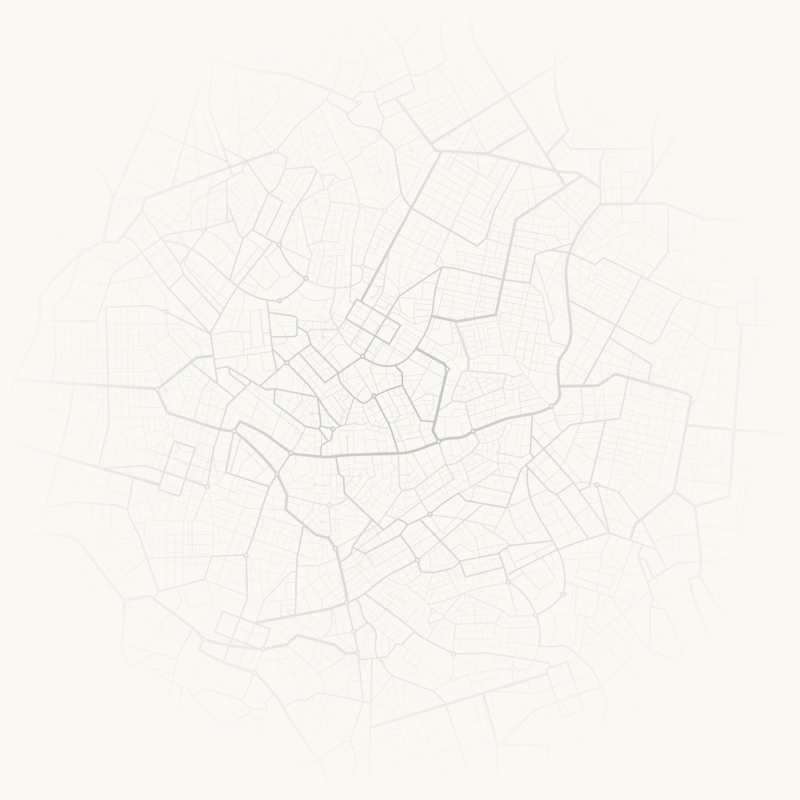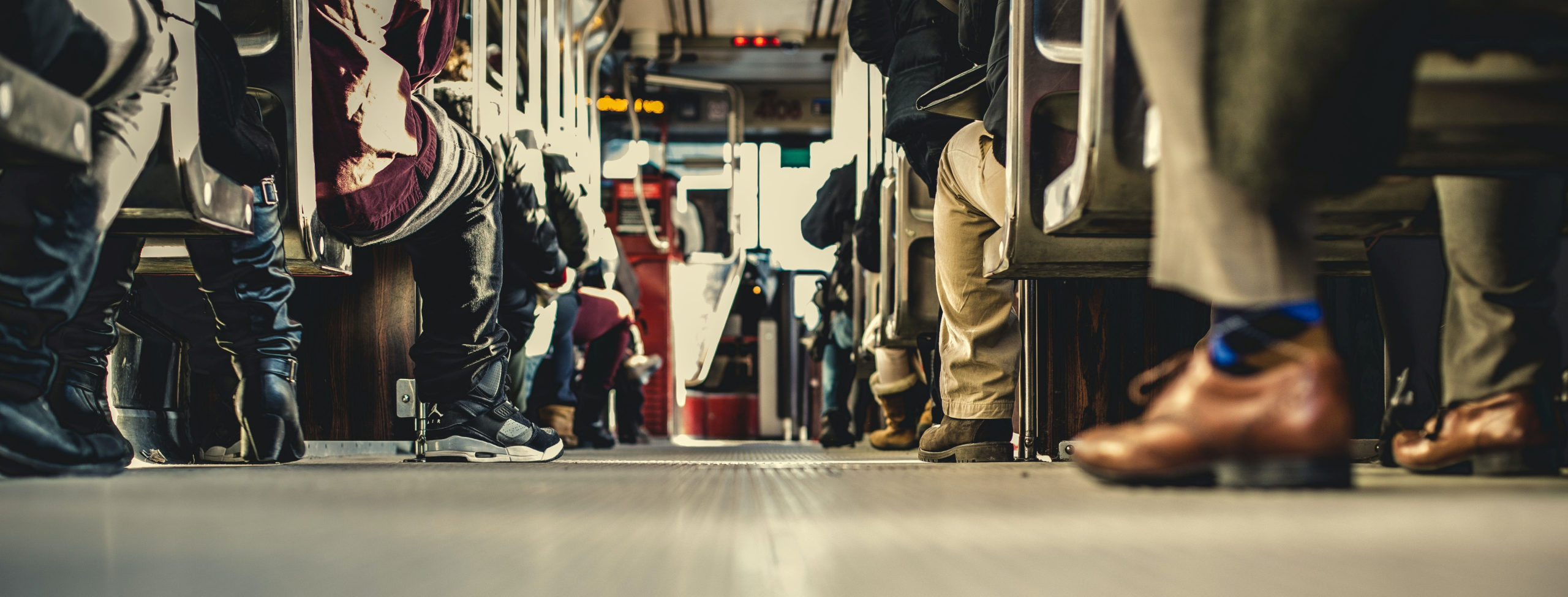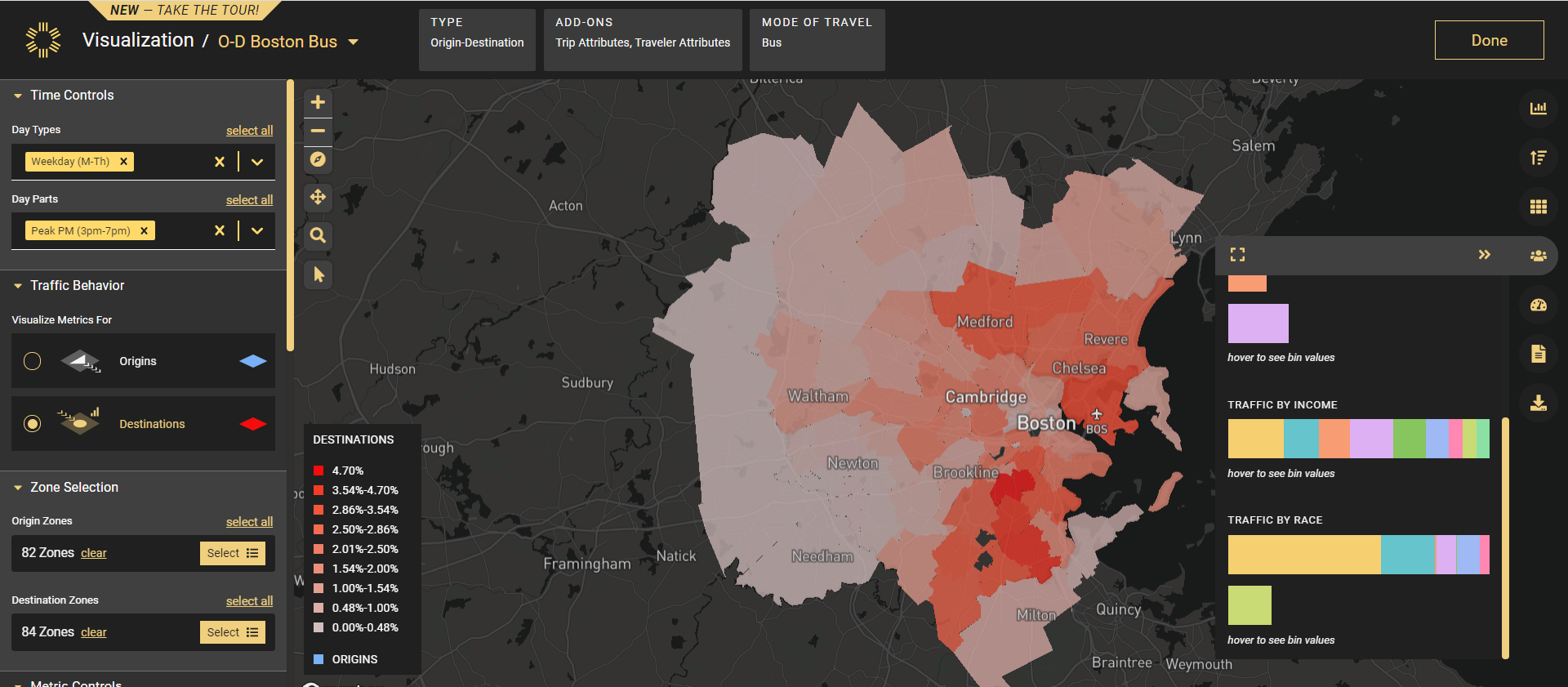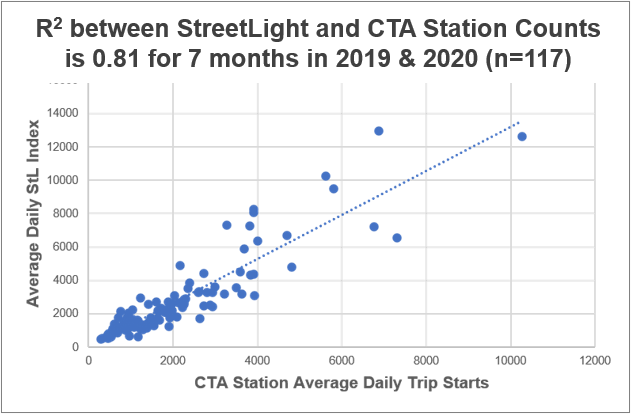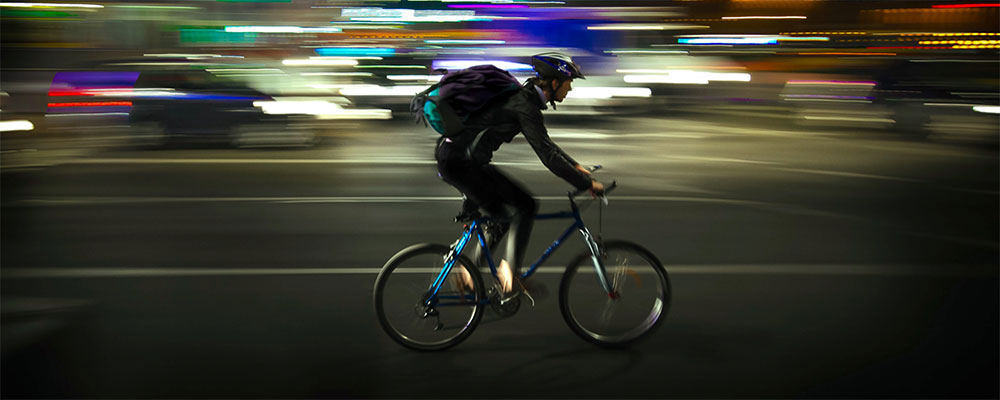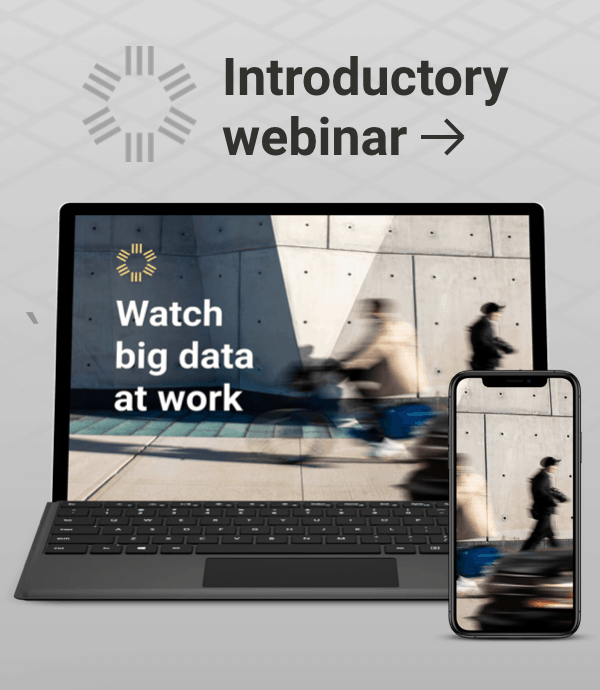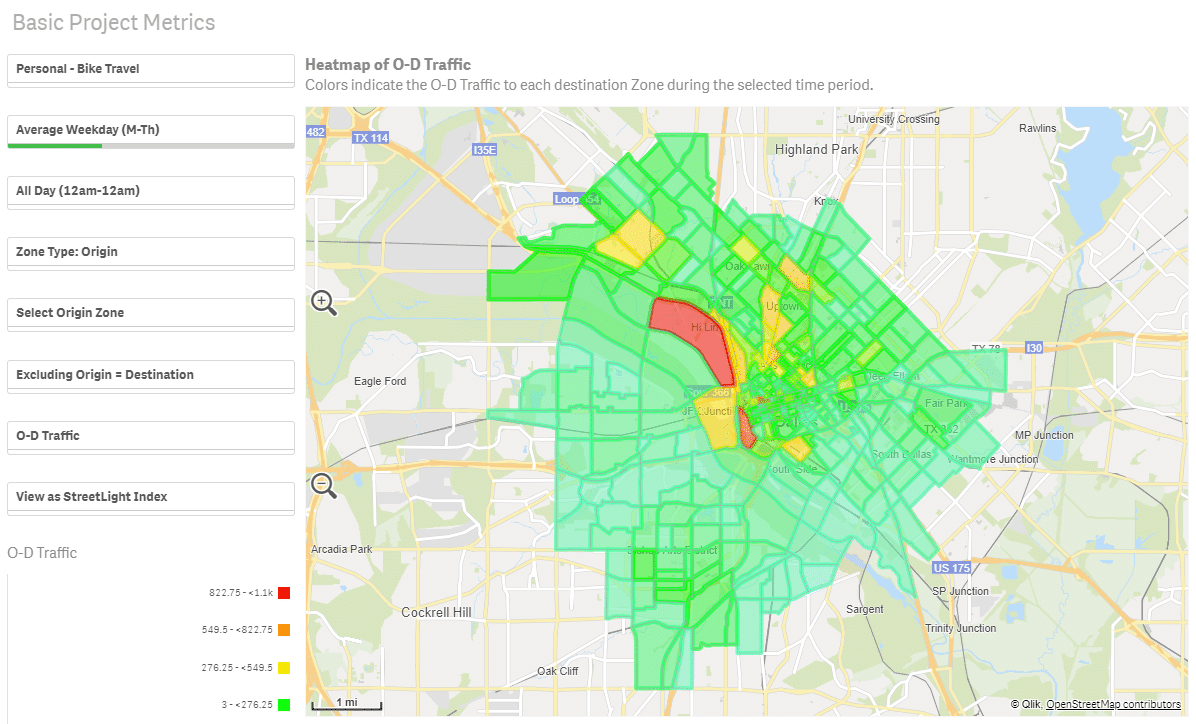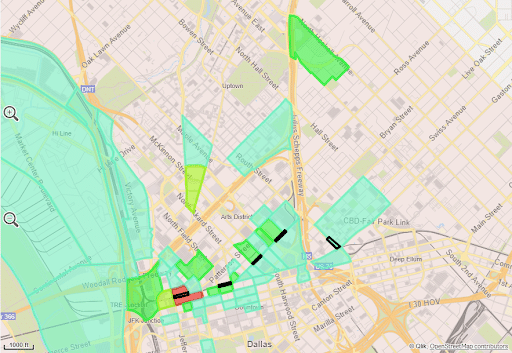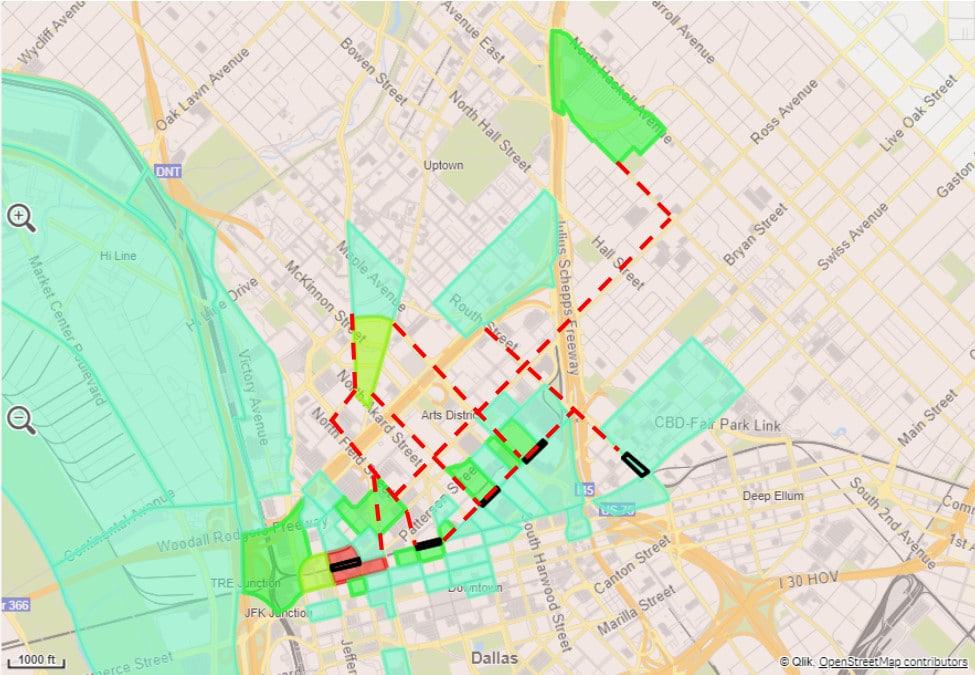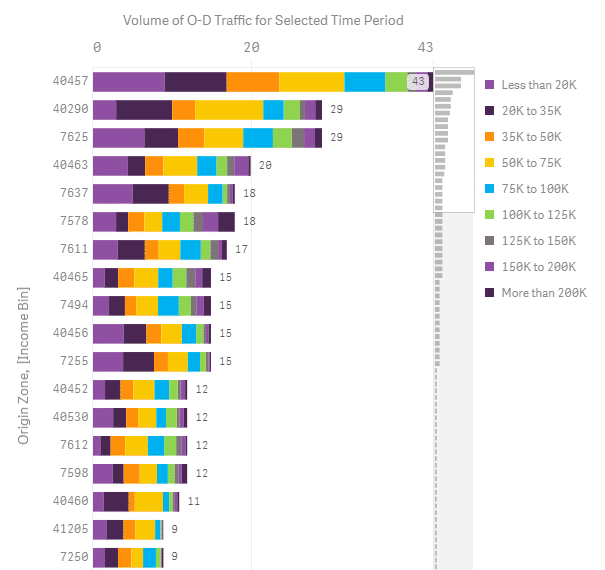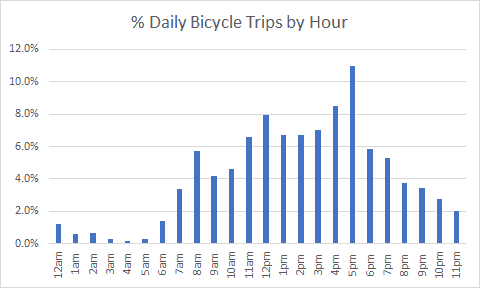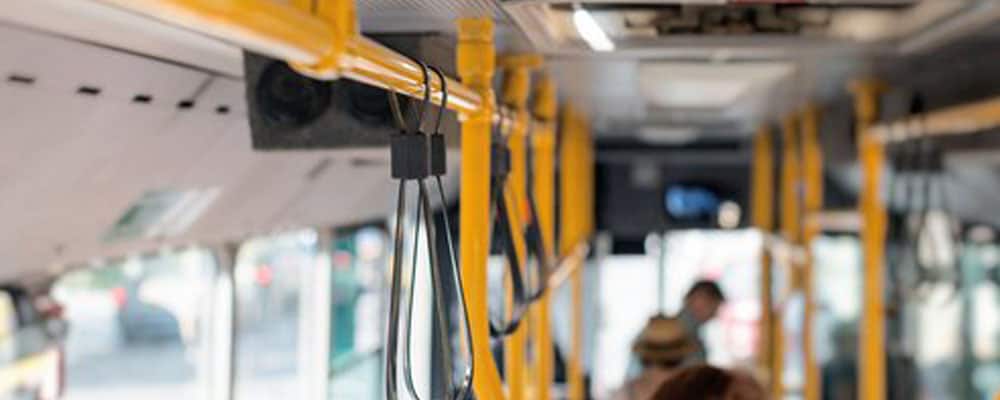What Are Complete Streets and How Can Analytics Help Us Build Them?
What Are Complete Streets and How Can Analytics Help Us Build Them?
Focusing on car-centric infrastructure can compromise roadway safety, increase emissions, and leave many without a reliable way to get from A to B. But Complete Streets policies promote safe and equitable outcomes for all road users.
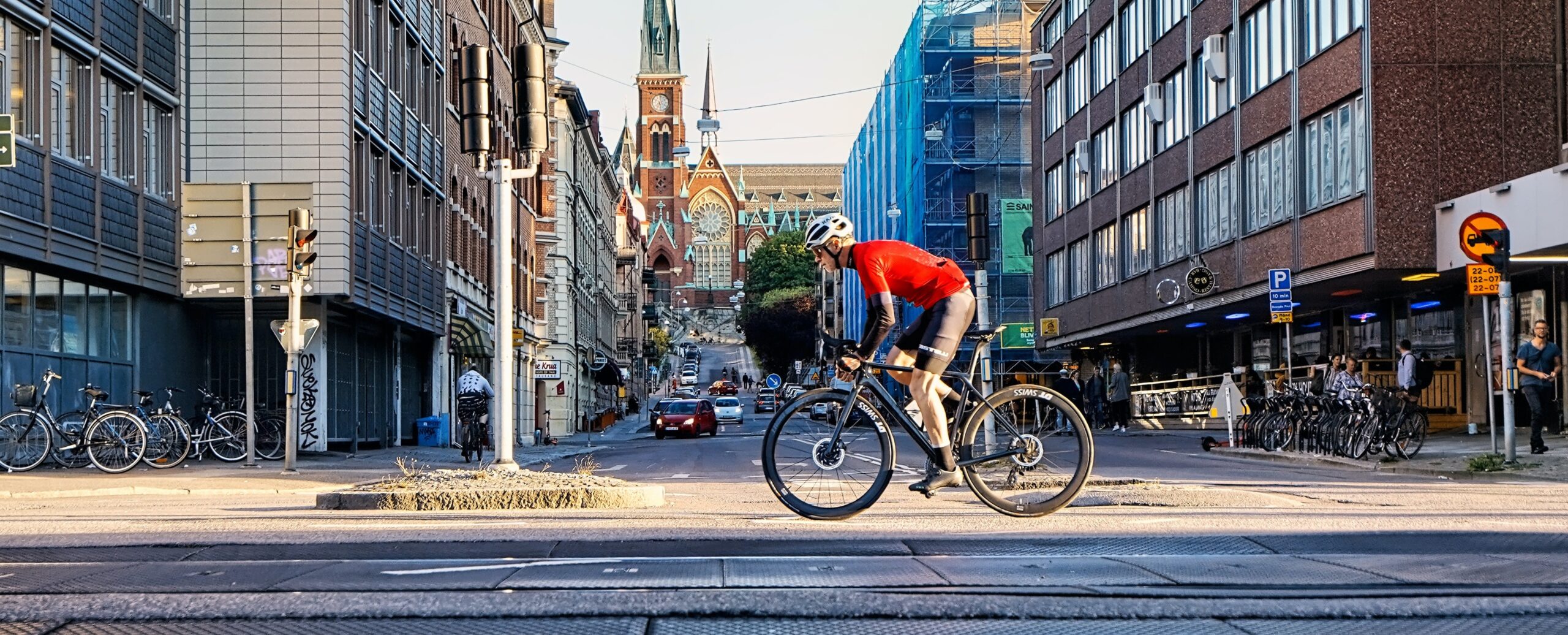
Jump Ahead
We have a tendency, particularly in the U.S., to design roads for cars and trucks. Decades of vehicle-centric city planning have exacerbated this tendency, as sprawling metropolises make travel by car essential for most Americans.
This focus on car-based travel leaves many people behind. Pedestrians and cyclists face unsafe roadways without bike lanes, sidewalks, or crossings. Those who cannot drive or afford a car struggle to get to work via transit or access essential resources like grocery stores and doctors. People living near congested highways — predominantly communities of color [1] — suffer the effects of both noise and air pollution, impacting health outcomes.
In the face of these realities, we need a paradigm shift in how we design streets. Instead of vehicle-first transportation systems, we need people-first transportation systems. And this new paradigm is already gaining ground through programs like Complete Streets.
What are Complete Streets?
“Complete Streets” is an approach to roadway policy and design that focuses on enabling safe mobility for all road users — drivers, pedestrians, bikers, and public transit riders alike, across the full spectrum of ages and abilities. [2]
For example, a Complete Streets policy may call for the implementation of pedestrian traffic signals that are accessible to those with visual impairments. Policies may also call for added bike lanes and bus lanes to improve safety and access to these transportation modes, or the implementation of curb extensions, crosswalks, and daylighting to provide safer paths for pedestrians.
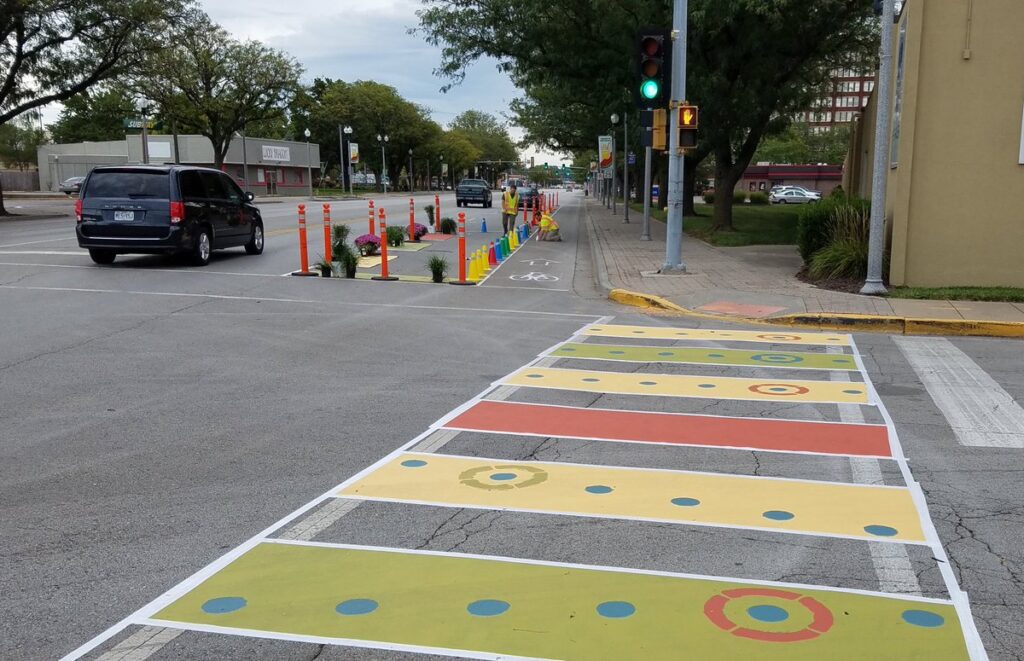
Many public officials at the local, regional, state, and federal levels are working to build better bicycle, pedestrian, and transit infrastructure through Complete Streets policies. The concept of Complete Streets is now mainstream in transportation, with planners striving to design and build streets that safely accommodate all transportation modes and users. In fact, according to the National Complete Streets Coalition, over 1,700 Complete Streets policies have been passed in the U.S., including those adopted by 37 states, Puerto Rico, and Washington D.C.
In this article, we’ll discuss several benefits to Complete Streets and how we can leverage transportation analytics to build more of them.
Why are Complete Streets more equitable?
Streets with multimode infrastructure offer more ways to travel, increasing mobility for everyone. Whether they drive, bike, walk, or use public transit, Complete Streets give them ways to get from point A to point B. This is especially crucial when point B is an essential resource like food, healthcare, work, or school.
Vulnerable populations, including people of color, people with disabilities, and those who are impoverished or experiencing homelessness are less likely to own or drive a car. Ensuring that non-car travel options exist increases access to mobility for these groups while also benefiting other travelers.
It’s important to note that the existence of non-car travel options doesn’t always ensure the accessibility of these options. Here, we mean accessibility in multiple senses — accessible for people with disabilities and accessible more broadly for all road users. Even when non-car mode options exist, there can be barriers to their use such as inadequate seating at bus stops or English-only signage.
In the video below, Alex Bell of Renaissance Planning explains how he used multimode analytics from StreetLight to compare mode availability to mode utilization in order to diagnose barriers to access for vulnerable populations.
Access to non-car transportation options can also help ensure fewer people suffer from homelessness. According to Jacob Wasserman, a researcher at UCLA who conducted a meta-analysis on transportation and homelessness,
“Homelessness is first and foremost a housing problem, but transportation is so intimately tied into housing. People can only live in places they can afford, which is sometimes really far from [the things they need to reach] because of our transportation decisions.” [3]
And because Complete Streets allow more opportunities for non-car travel, they also reduce overall Vehicle Miles Traveled (VMT), leading to improved air quality and less noise pollution for people living near highways, a group made up disproportionately of communities of color. That brings us to the next question….
Why are Complete Streets more climate-friendly?
Transportation is the top source of greenhouse gas (GHG) emissions in the U.S., at 27% in 2020, according to the EPA. That means the transportation industry has a critical role to play in addressing climate change.
Because Complete Streets reduce our reliance on single-occupancy vehicle (SOV) trips by making it easier to use shared mobility and active transportation options, they also lower total Vehicle Miles Traveled (VMT). By reducing the number of cars on the road, Complete Streets also help reduce traffic congestion, which means less time stuck in traffic with the engine running. With fewer miles traveled and less time spent in cars, emissions drop and air quality improves.
Adding Complete Streets infrastructure to existing roads can also have the effect of calming traffic. For example, road diets — which reduce the number of vehicle lanes and often repurpose the space for multimodal infrastructure — tend to reduce vehicle travel speeds and vehicle throughput without causing the congestion that would lead to increased emissions. Since vehicles are less fuel efficient and emit more CO2 per mile traveled at higher speeds, this means multimodal Complete Streets infrastructure can sometimes double as traffic calming measures that reduce emissions while also improving safety.
In the example below, AEC firm ATCS identified opportunities to invest in multimodal infrastructure on Route 234 Business in Prince William County, Virginia with the goals of reducing congestion, increasing safety, and making travel more sustainable.
Creating these opportunities for mode shift is crucial to decarbonizing our transportation networks, although they are just one strategy we can use to reduce overall emissions. We explore additional strategies in our free guidebook, Measure & Mitigate: Transportation Climate Data Solutions.
Why are Complete Streets safer?
As roads emptied and travel speeds increased during COVID, severe crashes spiked. This made many cities less safe for bikers and pedestrians in particular, highlighting the urgency of infrastructure improvements and traffic calming measures to make streets safer.
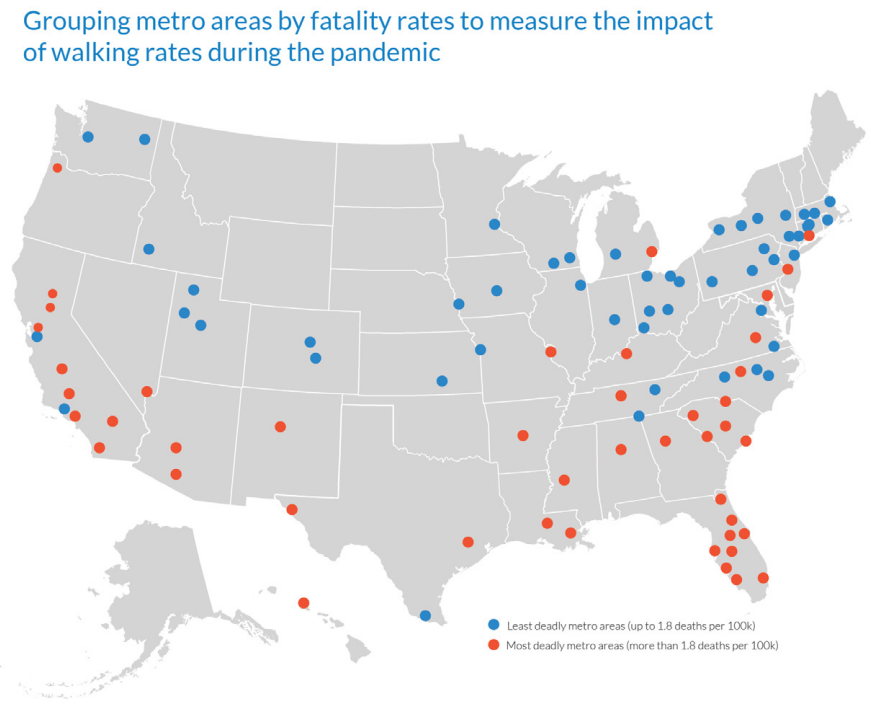
When streets lack multimodal infrastructure like signalized crossings and bike lanes, that doesn’t prevent non-car road users from needing to travel. Many still need to walk, bike, or use public transportation in order to access basic necessities, forcing them to brave streets that lack the infrastructure needed to keep them safe as they travel.
Adding accessible sidewalks, crossings, bike lanes, bus lanes, signage, and other Complete Streets infrastructure helps ensure that not only can people travel, but they can do so safely.
Complete Streets improvements may also mean making streets safer not just for travelers, but also for road workers, outdoor patio diners, and homeless people sheltering under overpasses or asking for help at intersections. In the example below, the City of Pasadena implemented various traffic signal timing techniques to reduce the speed on corridors with outdoor dining, as well as other arterials.
For more strategies to make streets safer, download our free Safety Handbook.
How can we build more Complete Streets?
With all these benefits to Complete Streets, how can transportation professionals make headway on ensuring more of our streets serve all road users?
Implementing official Complete Streets policies can provide the incentive and accountability to get started. In the U.S., the Federal Highway Administration (FHWA) offers guidance for transportation agencies looking to establish Complete Streets policies. [4]
In addition to this guidance, federal funding is available to help with Complete Streets projects. Grant programs like Safe Streets and Roads for All (SS4A), the Reconnecting Communities Pilot (RCP) Program, and Rebuilding American Infrastructure with Sustainability and Equity (RAISE) help agencies secure funding for planning and implementing Complete Streets projects.
The Federal Transit Administration has also waived the local funding match requirement for Complete Streets planning activities to receive funding through the federal State Planning and Research Program (SPRP) and Metropolitan Planning Program (MPP) through the end of 2026.
Because so many factors might go into making streets “complete,” — bike lanes, bus stops, signage, sidewalks, well-timed traffic signals, and so much more — understanding existing roadway conditions, mode usage, traveler demographics, and the impact of past projects are key. This is where digital transportation analytics come in to help agencies identify high-priority improvements and develop data-supported implementation plans.
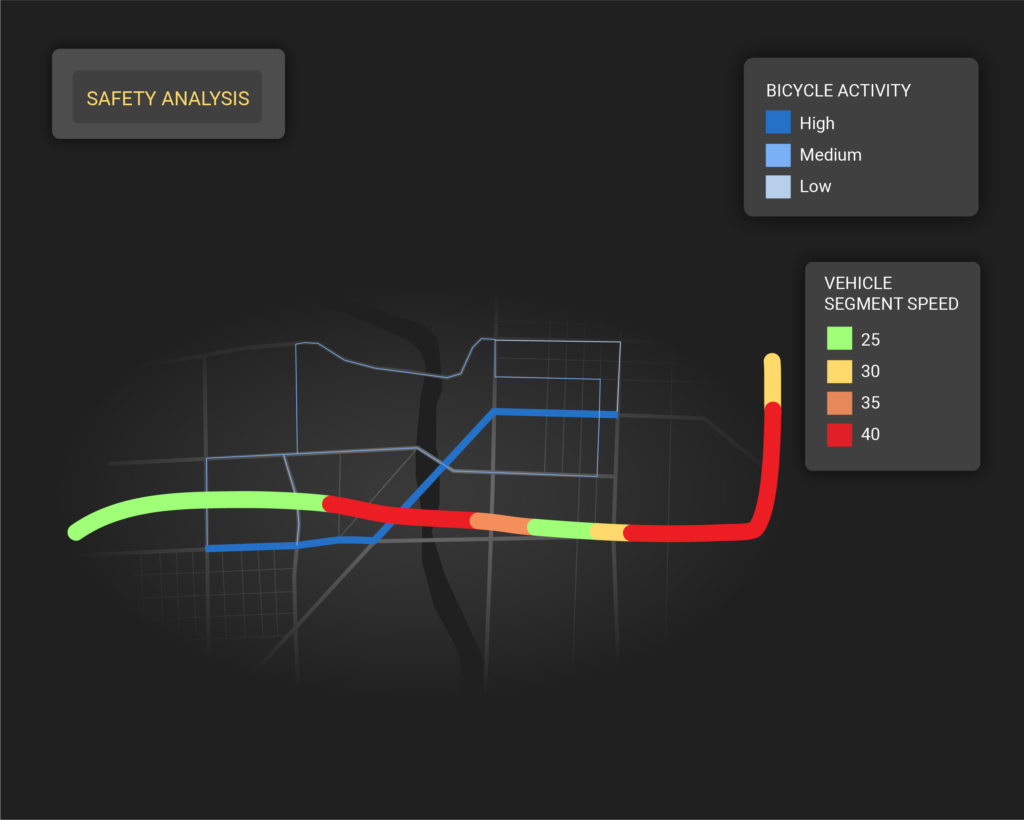
Transportation analytics for Complete Streets
The right data is necessary to identify and prioritize high-impact roadway improvements, secure project funding, and earn public and political buy-in for your proposed solutions. While traditional data collection methods like sensors and surveys offer helpful data points to support these goals, they often present limitations in scope and sample size. Digital, on-demand transportation analytics fill in the gaps to enrich our understanding of travel patterns and the needs of road users.
Because installing new multimodal infrastructure can be costly and time-consuming, one of the easiest ways to make streets more complete is to evaluate the performance of existing infrastructure and identify opportunities for optimization.
Say you wanted to optimize bus schedules or add stops to an existing route to adapt to shifting travel demand. An Origin-Destination (O-D) analysis using digital traffic data can illuminate where lots of people are traveling between work and home, while the ability to view traffic volumes by time of day can help determine when most people need to travel. Aggregated demographic data can also be overlaid onto travel patterns to understand where vulnerable populations would most benefit from added stops.
For example, when commuting patterns shifted after COVID, bus ridership in San Francisco dropped disproportionately to other modes. On-demand transit metrics helped SamTrans understand shifting travel behaviors and boost bus ridership by 30% after adjusting bus schedules.
When installing new infrastructure such as a bike lane or pedestrian bridge, digital analytics help agencies prioritize high-impact locations to invest in multimode infrastructure. For example, one Parks & Rec group used O-D analysis to determine the daily number of bikeable trips (five miles or shorter) to a target destination, justifying their investment in a new trail and bridge facility.
Similarly ATCS used digital transportation analytics to develop a multimodal scoring system for DC DOT that would help them pinpoint infrastructure gaps and determine where new projects were most needed:
Want to learn more about how digital transportation analytics can power effective Complete Streets initiatives? See how on-demand traffic data supports:
- Active Transportation modes
- Bus and rail
- Road safety
- Transportation equity
- Climate solutions
- Federal grant applications
- Yoo Min Park and Mei-Po Kwan, “Understanding Racial Disparities in Exposure to Traffic-Related Air Pollution: Considering the Spatiotemporal Dynamics of Population Distribution.” Int J Inviron Res Public Health 17 (Feb 2020): 908.
- U.S. DOT, “Complete Streets,” August 2015.
- Kea Wilson, Streetsblog USA. “Three Ways DOTs Can Help the Unhoused – On and Off the Road.” February 23, 2023.
- Federal Highway Administration (FHWA), “Make Complete Streets the Default Approach.” February 2023.
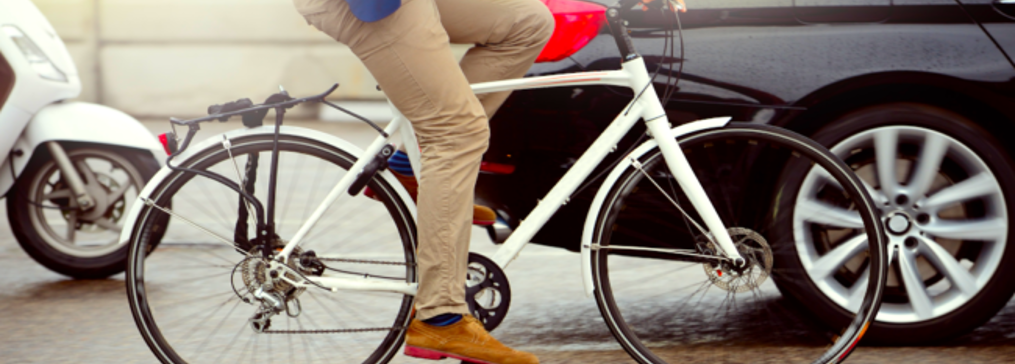
Make streets safer with data-informed infrastructure planning
Download Safety HandbookReady to dive deeper and join the conversation?
Explore the resources listed above and don’t hesitate to reach out if you have any questions. We’re committed to fostering a collaborative community of transportation professionals dedicated to building a better future for our cities and communities.
